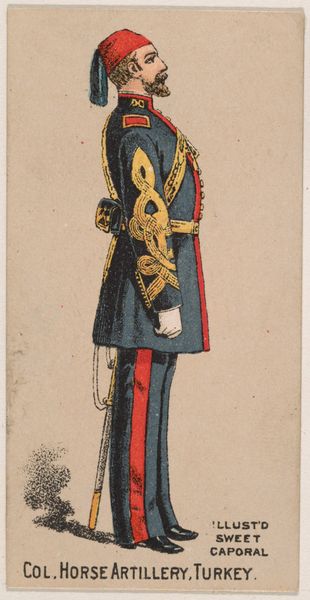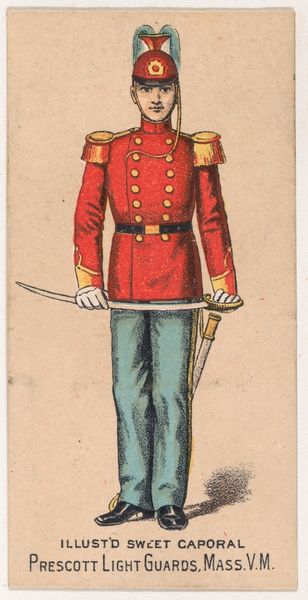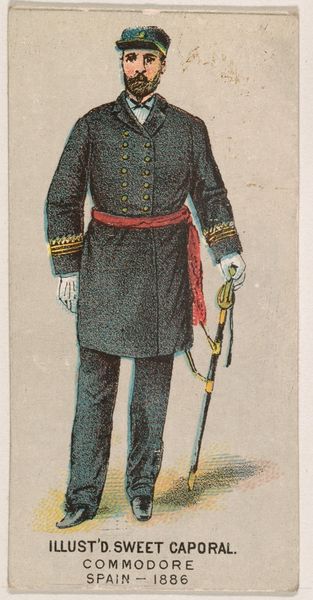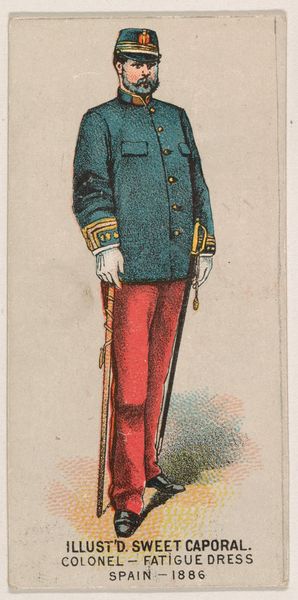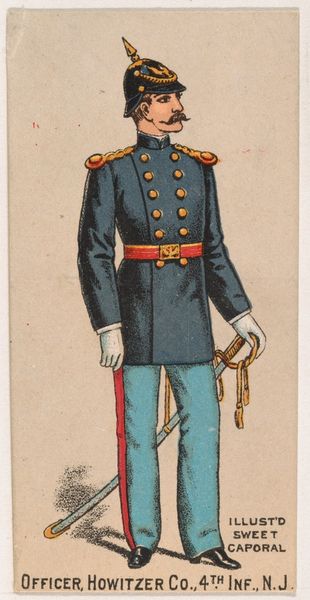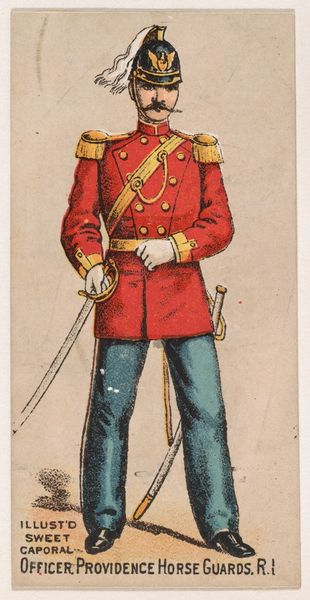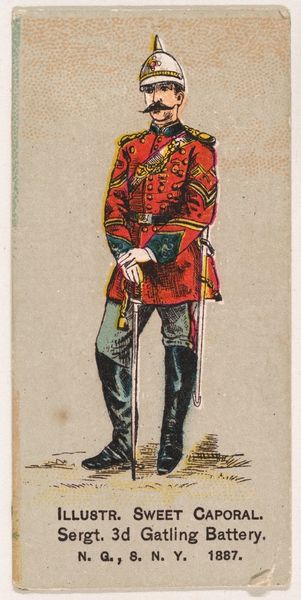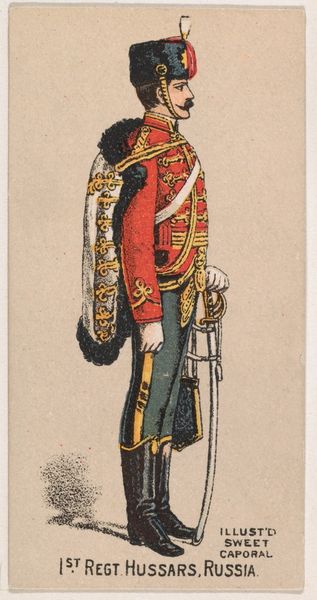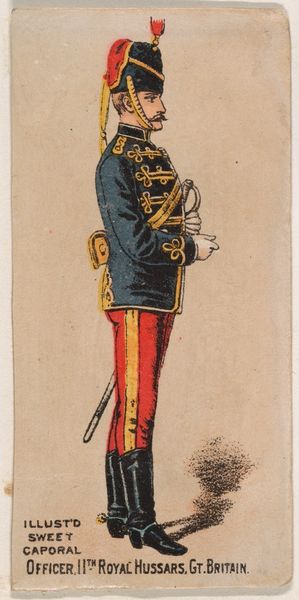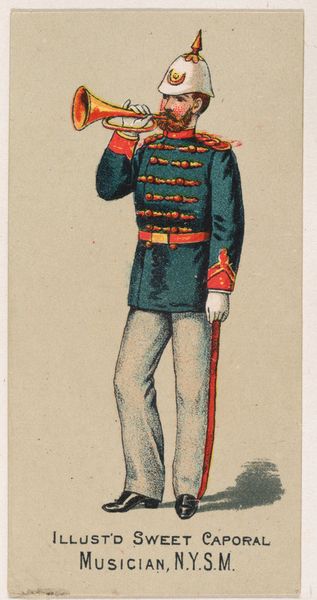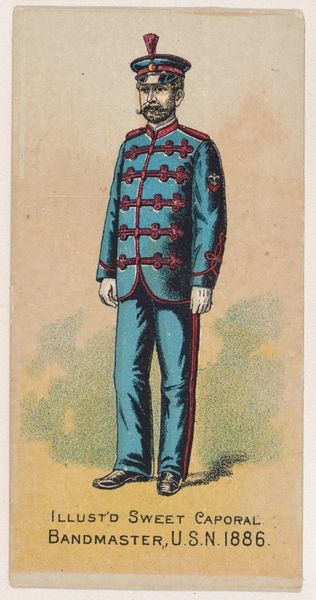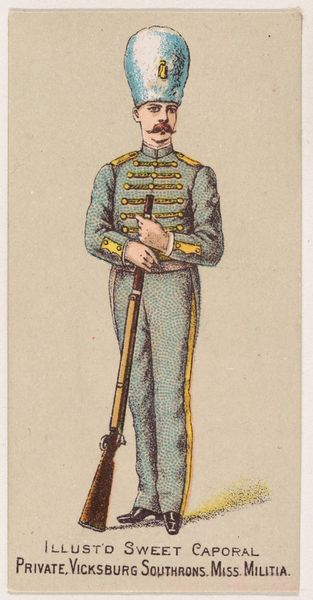
Pikeman, Palace Guard, Turkey, from the Military Series (N224) issued by Kinney Tobacco Company to promote Sweet Caporal Cigarettes 1888
0:00
0:00
drawing, print
#
portrait
#
drawing
# print
#
orientalism
#
men
#
profile
Dimensions: Sheet: 2 3/4 × 1 1/2 in. (7 × 3.8 cm)
Copyright: Public Domain
Editor: This print, dating from 1888, depicts a Pikeman of the Palace Guard in Turkey. It comes from a Military Series of tobacco cards issued by Kinney Tobacco Company. I’m struck by the elaborate, almost theatrical, quality of the uniform. What jumps out at you? Curator: Immediately, I see a conflation of cultural symbols designed to evoke the “Orient” for Western consumers. The artist’s understanding of Turkish military dress seems filtered through a European lens, romanticizing the “other.” Notice how the ornate costume and the pikeman’s stillness contrasts sharply with what the role of "guard" signifies to our modern understanding. Editor: Romanticizing? What specific visual cues lead you to that conclusion? Curator: Consider the colors: the vibrant red and gold. They convey opulence and exoticism. The meticulous detail given to the embroidery, almost reverential, speaks of idealized representation rather than realistic documentation. Do you see anything that feels like an imagined idea of Turkey as opposed to its reality? Editor: The upright pose, the distinct lack of dynamism, now that you mention it, makes the figure feel more symbolic than real. Perhaps this image was more about selling a dream of the East rather than accurately portraying it. Curator: Precisely. And dreams carry cultural weight. This image tells us not just about the Pikeman, but about how the West chose to envision and consume the East, turning people into images, objects, and experiences for profit. What is lasting, and what does it teach us today about cultural understanding? Editor: It’s a potent reminder that images aren't neutral. They actively shape perceptions, sometimes reinforcing stereotypes in ways that echo through generations. Food for thought indeed!
Comments
No comments
Be the first to comment and join the conversation on the ultimate creative platform.
